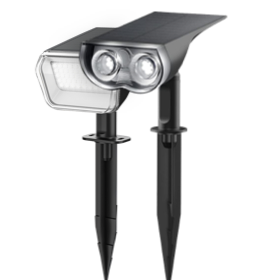How Long Do Smart Bulbs Last? Maximizing Lifespan & Top Picks
- “How Long Do Smart Bulbs Last?”
- Most smart bulbs last 15,000–25,000 hours—equivalent to 15–25 years with 3 hours of daily use.
But their lifespan depends on quality, usage habits, and protection against factors like heat and power surges. Smart bulbs revolutionize home lighting with energy savings, voice control, and mood-enhancing features. Yet their true value lies in durability. Unlike traditional bulbs that burn out abruptly, smart LEDs dim gradually, offering years of reliable service. But not all are created equal.
In this guide, you’ll learn how to squeeze every hour out of your bulbs and choose models engineered to outlast the competition.

Understanding Smart Bulb Lifespan: Why LEDs Outlast Traditional Bulbs
While traditional incandescent bulbs burn out quickly due to fragile filaments, smart bulbs—powered by LED technology—boast lifespans measured in years rather than months. But how exactly do LEDs achieve this longevity, and what role do "smart" features play? To answer this, we’ll break down the science behind LED durability and explore how advanced engineering keeps these bulbs shining bright. However, even robust designs can falter under certain conditions, so we’ll also examine the key factors that can shorten a smart bulb’s lifespan if overlooked.

How It Works:
The secret to LED longevity lies in their fundamentally different design compared to traditional bulbs. Unlike incandescent, which generate light by heating a filament until it glows (and eventually breaks), LEDs produce light through semiconductor technology. This shift eliminates the most common failure point—filament burnout—and allows LEDs to degrade slowly over time. Meanwhile, smart bulbs add layers of connectivity via embedded chips and software, raising questions about how these features impact reliability. When engineered thoughtfully, however, the marriage of LED efficiency and smart functionality creates a product that’s both long-lasting and intelligent. Let’s dive deeper:
LED Technology: No filaments to burn out. Instead, LEDs dim gradually over time (called “lumen depreciation”).
Smart Features: Built-in chips for Wi-Fi/Bluetooth add complexity but don’t drastically reduce lifespan if engineered well.
Factors That Shorten Lifespan:
While LEDs are inherently durable, smart bulbs face unique challenges that can undermine their longevity. Their advanced electronics—while enabling features like color tuning and voice control—also introduce vulnerabilities absent in traditional bulbs. Heat, power fluctuations, and usage patterns all play critical roles in determining whether a bulb survives for its advertised 15,000–25,000 hours or fails prematurely. By understanding these risks, users can take proactive steps to maximize their smart bulbs ’lifespan. Below are the primary culprits to watch for:
Heat Buildup: Poor ventilation shortens lifespan. Avoid enclosed fixtures unless bulbs are rated for them.
Voltage Fluctuations: Surges damage internal drivers. Use surge protectors for stability.
On/Off Cycles: Unlike CFLs, LEDs and smart bulbs handle frequent switching well, but excessive cycles (100+ daily) strain components.
Connectivity Type: Zigbee and Wi-Fi bulbs consume more power in standby mode than Bluetooth models, slightly reducing lifespan. For those exploring protocols like Matter vs Z-Wave, Matter’s energy-efficient design and cross-platform compatibility make it a future-proof choice for minimizing standby drain.
Smart Bulbs vs. Traditional Bulbs: Cost & Longevity
Before diving into numbers, it’s important to understand why lifespan matters. Unlike traditional bulbs, smart bulbs combine LED efficiency with advanced circuitry for connectivity. But how do they stack up against older technologies? Let’s compare:
|
Bulb Type |
Avg. Lifespan |
Energy Use (Watts) |
|
Incandescent |
1,000 hours |
60W |
|
CFL |
8,000 hours |
15W |
|
LED |
25,000 hours |
10W |
|
Smart LED |
15,000–25,000 |
8–20W |
5-Year Cost Analysis
Assume 10 bulbs used 5 hours daily at $0.15/kWh:
Incandescent: 328.50(energy)+328.50(energy)+50 (replacements) = $378.50
Smart LED: 54.75(energy)+54.75(energy)+0 (no replacements) = $54.75
Smart bulbs save ~85% long-term despite higher upfront costs
Expert Tips to Extend Smart Bulb Lifespan
Smart bulbs are a long-term investment, but their lifespan depends heavily on how you use and maintain them. By adopting these science-backed strategies, you can stretch their longevity to match—or even exceed—manufacturer claims:
Avoid Overheating: Install bulbs in open fixtures. Use heat-resistant models for recessed lighting.
Stabilize Power Supply: Pair with surge protectors to prevent voltage spikes.
Limit Unnecessary Cycling: Use motion sensors or schedules to reduce manual switching.
Update Firmware: Regular updates optimize performance, especially critical for advanced systems like Thread smart bulbs or Matter-enabled devices.
Leverage Dimming: Reduce brightness to 70% to minimize heat and energy use.
Clean Regularly: Dust traps heat—wipe bulbs with a dry cloth every 3 months.
When to Replace a Smart Bulb: 5 Warning Signs
Even the best smart bulbs won’t last forever. Recognizing early failure signs can prevent sudden outages or safety risks. Here are five red flags that it’s time for a replacement:
Flickering: Often indicates driver failure.
Color Inconsistency: Fading hues signal LED degradation.
Connectivity Drops: Frequent disconnections suggest internal damage.
Delayed Responses: Lagging app controls may mean outdated firmware or hardware issues.
Physical Damage: Cracks or moisture exposure demand immediate replacement.
Light Up Your Life: Meet Linkind Matter Smart Bulbs Built for Every Mood & Moment
Upgrading to smart lighting isn’t just about convenience—it’s about investing in bulbs that last longer, adapt to your lifestyle, and elevate everyday moments. For those prioritizing durability and versatility, Linkind Matter Smart Bulbs stand out with future-proof connectivity, immersive features, and energy efficiency designed to thrive for years. Below, we spotlight two top performers that redefine what smart bulbs can do:
Linkind A19 Matter Smart RGBTW Bulb
Imagine bulbs that sync with your music, adapt to your schedule, and deliver stunningly accurate colors—all while lasting longer than most competitors. The A19 bulb combines dual-band Wi-Fi/Bluetooth connectivity for rock-solid performance, even during internet hiccups. Unlike single-connection bulbs, it automatically switches to Bluetooth if Wi-Fi drops, ensuring your lights never leave you in the dark.
Top Features:
Matter Compatibility: Works seamlessly with Apple Home, Google Nest, Alexa, and SmartThings—no more app-switching hassles.
Music Sync Mastery: Choose between harmonized beats (all bulbs pulse together) or dynamic multi-color mode (each bulb dances independently) for parties or chill sessions.
CRI 90+ Color Precision: As a top-tier LED color-changing light bulb, it transitions seamlessly from warm candlelight (1,800K) to vibrant daylight (6,500K), perfect for dynamic scenes.
Scene Library: Instantly transform rooms with 104 presets—think "Cinema Mode" for movie nights or "Zen Garden" for meditation.
Ideal for: Living rooms, bedrooms, or creative spaces where ambiance and reliability matter.

-
Seamless & Stable Connectivity: Linkind smart bulbs feature dual Wi-Fi/Bluetooth for reliable control anywhere. Wi-Fi enables remote access; Bluetooth serves as backup. Quick 5-second reconnection after outages.
-
Matter-Enabled: Matter-compatible bulbs work with Apple, Google, Amazon & Samsung ecosystems. Control all from one app—schedule, dim, and create scenes easily.
-
Sync Lights to Music: Transform spaces with two sync modes—synchronized for uniform beat-matching or asynchronous for multi-color displays that respond independently to music.
-
Scene Modes: 104 presets and 16 million colors give complete creative control. Personalize any space with one tap for movies, gaming, or relaxation.
-
True-to-Life Colors: CRI 90+ ensures rich, natural tones. Adjust from warm 1,800K to crisp 6,500K daylight, or explore endless color options for any mood.
Linkind BR30 Matter Smart RGBTW Bulb
Built for recessed lighting but engineered for longevity, the BR30 bulb shines in high-traffic areas like kitchens and hallways. Its dual Wi-Fi/Bluetooth design ensures instant reconnection after power outages (just 5 seconds!), while the gentle 60Hz flicker-free glow reduces eye strain—perfect for late-night snack runs or all-day workstations.
Top Features:
Energy-Saving Durability: At 8W (equivalent to 65W incandescent), it slashes energy bills and boasts a 25,000-hour lifespan—over a decade of daily use.
Immersive Audio-Visual Harmony: Sync lights to music’s tempo with precision beat matching or let colors flow freely for a mesmerizing backdrop.
Matter Ecosystem Hub: Control all smart devices from one app—dim lights, activate scenes, or schedule routines without juggling platforms.
Ideal for: Kitchens, offices, or smart home hubs where reliability and eye comfort are non-negotiable.

-
Uninterrupted Smart Lighting Control: Dual Wi-Fi/Bluetooth technology ensures always-on performance. 5-second reconnection after outages keeps your smart lighting responsive anywhere.
-
Matter Smart Home: Matter compatibility connects with Apple, Google, Amazon & SmartThings from one platform. Control all smart lighting without switching apps.
-
Dynamic Music-Reactive Lighting: Transform spaces with synchronized or multi-color async modes that pulse perfectly to your music's beat for immersive audio-visual experiences.
-
Customizable Atmosphere Creator: Choose from 104 preset modes and 16 million colors to set perfect ambiance for movies, gaming or relaxation with just a tap in the app.
-
High-Quality Assurance: Linkind BR30 smart matter light bulbs last up to 2500 hours a day and offer 2 years warranty, energy-saving 8W equivalent to a 65W incandescent bulb, and are designed with a gentle 60Hz frequency to minimize visual fatigue and promote eye comfort.
Conclusion
Smart bulbs offer a lifespan of 15,000–25,000 hours (15–25 years with 3 hours/day use), far exceeding traditional incandescent or CFL bulbs. Their longevity stems from LED technology, which avoids filament burnout and dims gradually. Key factors affecting lifespan include heat buildup, voltage fluctuations, and usage patterns. To maximize durability, stabilize power with surge protectors, avoid enclosed fixtures, and reduce unnecessary on/off cycles.
Linkind Matter Smart Bulbs exemplify innovation, combining dual-band connectivity, energy efficiency, and immersive features while delivering 25,000+ hours of reliable performance. With long-term cost savings and smart-home integration, investing in quality smart bulbs ensures years of adaptable, energy-efficient lighting.
FAQs
Q: Do smart bulbs burn out like traditional bulbs?
A: No—they dim over time. At 70% original brightness, consider replacement.
Q: Can leaving smart bulbs on 24/7 damage them?
A: No, but it shortens lifespan. Use schedules or motion sensors for efficiency.
Q: Do smart bulbs expire if unused?
A: Yes. Components degrade in 10–15 years, even in storage.




































